Á LA VIVA VERDE
| Lex Pavone's one-of-a-kind anthropomorphic vessels radiate a certain sense of calm. A gracefulness the artist hopes will carry over to the use of her impressive ceramic creations. Working under the creative name La Viva Verde, Lex hand and coil-builds her sculptural pieces, molding each human face individually. Her process allows for a more intentional design, one in which she's somehow able to imbue her work with both historical context through her chosen techniques as well as the spirit of her ancestors and the many cultures that are integral to her composition as a human being. Read on to learn more about Lex and La Viva Verde. |
 Lex Pavone |
When did you first start incorporating faces into your work?
I first started experimenting with sculpting faces in the third year of my bachelor's. I was taking a higher-level ceramics course, and we were able to create our own focus during the semester. At that time, I had already been taking multiple art history courses. I found myself especially drawn to particular works and realized they were all depictions of humans in one way or another. The human figure has, and will always carry, a huge significance in the creative realm - it being the most direct way art can address the human condition. So given this opportunity to design my own coursework, my experimentation started, first with other parts of the human body - like the torso, mouth, or hands - then ultimately leading me to faces.
 |
Photographs courtesy of the artist. |
|
What artists or art movements have inspired you? Maria Martinez would have to be a favorite potter that comes to mind. As of now, I both wheel-throw my work as well as hand-build. But for the better part of my ceramic endeavors, I've always favored hand-building. Maria Martinez was a Native American ceramic artist who created beautiful, near-perfect coil-built pots. She would collect local clay and volcanic ash, mix them, then coil-build up her vessels. Using a gourd piece, she would then stretch out the coils, growing and evening out the body of the pot. I adopted this technique and have used the same piece of gourd I sanded down over ten years ago to hand-build all my vessels. |
Maria Martinez, photograph courtesy of Medicine Man Gallery. |
|
Dimivan Caracaracol Vessel, 1200-1500, Taíno culture; Dominican Republic. Photograph courtesy of Bowers Museum. |
|
The Assyrian Winged Lamassu at The British Museum. |
I wouldn't say I have any particular 'movement' that has inspired me, but rather many different pieces throughout time - such as the many ancient amphoras and jars, the jasper head of Teye, the Assyrian winged Lamassu, and the anthropomorphic vessels of the Taíno. |
|
How do you stay inspired? Do you have any tricks to pull yourself out of a creative rut? I absolutely get into lulls, like I'm sure every creator experiences. Stepping back from your work is very important. And by stepping back, I mean doing anything but working with the medium, even if it's only for a few days. After I'm away from clay, soon enough, I find myself coming up with new ideas to build and can't wait to dive back in. Another important thing to keep my creative drive running is working on pieces/projects solely for myself. I remember when I was creating pieces that were very popular but falling too far from my style and into more of a trend. It was making me hate my work and dread building. When I realized why I was lacking creative drive, I set a boundary where I was only going to create what I wanted. |
Fragment of the Face of a Queen (the jasper head of Teye), Egypt, c. 1353-1336 B.C.E. Yellow Jasper. |
How have the faces you create evolved since you started making them in college?
In the early part of my creating (like I mentioned in the previous question), I was creating a lot of work that other folks wanted me to make - too 'pop.' Although I am grateful to have relied on that to get my work growing in a financial sense, it's not what I had intended for my creations. My work is very much inspired by my ethnic background - Roman, Taíno, and some Egyptian influences play a big role in my style evolution and choices. I hope to slowly continue to fine-tune my craft and style - for my faces to give a stoic and ethereal air, my vessels to look like they could be found in some ancient city. "That's the fantastic thing about ceramic and stone - they can quite literally survive through all the elements and centuries of time while still keeping nearly perfectly intact. One day I hope my works will have survived hundreds of years into the future, only to be found and treasured all over again.
|
Taíno Ceramic Bowl, c. 13th-15th Century. Photograph courtesy of The Metropolitan Museum of Art. |
 |
Is it difficult to part with your pieces? They're so full of character we could envision getting attached to them!
I've definitely grown attached to certain pieces, and it's hard to part with them - but I am happy I get to share a little part of myself with others. I've actually only kept three pieces all these years. I end up gifting lots to friends and family, and I have many repeat customers/collectors, so I know they're going to a good home.
|
Iron Balance and Gold Ring by Lex Pavone |
SHOP LEX PAVONE'S WORK:
|
Iron Balance by Lex Pavone |
Gold Ring by Lex Pavone |
|
White Glass Drop by Lex Pavone |
Gray Twin by Lex Pavone |
|
Charcoal Ebb by Lex Pavone |
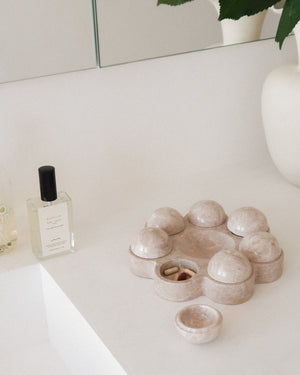
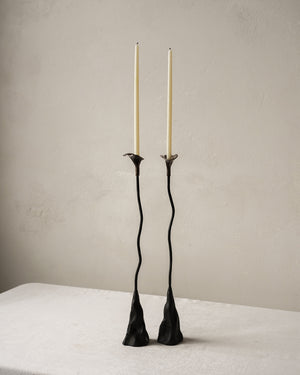
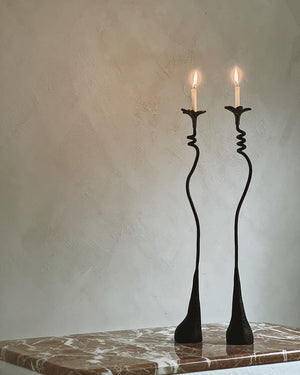
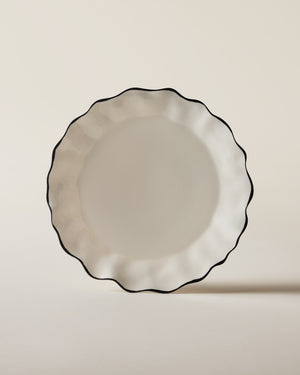
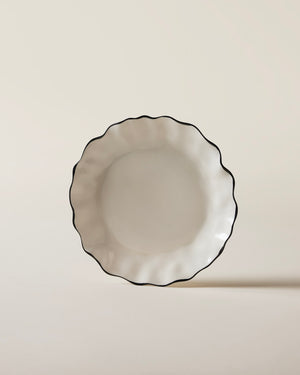
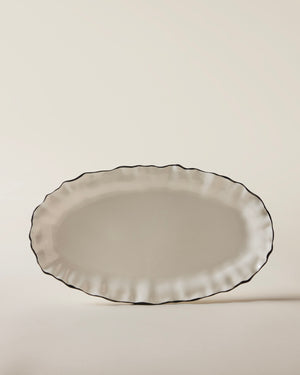









 Sealed Amphora Containing Oil, Egypt, c. 1492-1473 B.C.
Sealed Amphora Containing Oil, Egypt, c. 1492-1473 B.C.




